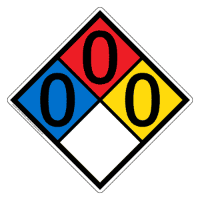|
Rtecs
Registry of Toxic Effects of Chemical Substances (RTECS) is a database of toxicity information compiled from the open scientific literature without reference to the validity or usefulness of the studies reported. Until 2001 it was maintained by US National Institute for Occupational Safety and Health (NIOSH) as a freely available publication. It is now maintained by the private company BIOVIA or from several value-added resellers and is available only for a fee or by subscription. Contents Six types of toxicity data are included in the file: # Primary irritation # Mutagenic effects # Reproductive effects # Tumorigenic effects # Acute toxicity # Other multiple dose toxicity Specific numeric toxicity values such as , LC50, TDLo, and TCLo are noted as well as species studied and the route of administration used. For all data the bibliographic source is listed. The studies are not evaluated in any way. History RTECS was an activity mandated by the US Congress, establishe ... [...More Info...] [...Related Items...] OR: [Wikipedia] [Google] [Baidu] |
LC50
In toxicology, the median lethal dose, LD50 (abbreviation for " lethal dose, 50%"), LC50 (lethal concentration, 50%) or LCt50 is a toxic unit that measures the lethal dose of a toxin, radiation, or pathogen. The value of LD50 for a substance is the dose required to kill half the members of a tested population after a specified test duration. LD50 figures are frequently used as a general indicator of a substance's acute toxicity. A lower LD50 is indicative of increased toxicity. The test was created by J.W. Trevan in 1927. The term semilethal dose is occasionally used in the same sense, in particular with translations of foreign language text, but can also refer to a sublethal dose. LD50 is usually determined by tests on animals such as laboratory mice. In 2011, the U.S. Food and Drug Administration approved alternative methods to LD50 for testing the cosmetic drug Botox without animal tests. Conventions The LD50 is usually expressed as the mass of substance administered per u ... [...More Info...] [...Related Items...] OR: [Wikipedia] [Google] [Baidu] |
Toxicity
Toxicity is the degree to which a chemical substance or a particular mixture of substances can damage an organism. Toxicity can refer to the effect on a whole organism, such as an animal, bacterium, or plant, as well as the effect on a substructure of the organism, such as a cell ( cytotoxicity) or an organ such as the liver ( hepatotoxicity). By extension, the word may be metaphorically used to describe toxic effects on larger and more complex groups, such as the family unit or society at large. Sometimes the word is more or less synonymous with poisoning in everyday usage. A central concept of toxicology is that the effects of a toxicant are dose-dependent; even water can lead to water intoxication when taken in too high a dose, whereas for even a very toxic substance such as snake venom there is a dose below which there is no detectable toxic effect. Toxicity is species-specific, making cross-species analysis problematic. Newer paradigms and metrics are evolving to ... [...More Info...] [...Related Items...] OR: [Wikipedia] [Google] [Baidu] |
Canadian Centre For Occupational Health And Safety
The Canadian Centre for Occupational Health and Safety (CCOHS) is an independent departmental corporation under Schedule II of the Financial Administration Act and is accountable to Parliament through the Minister of Labour. CCOHS functions as the primary national agency in Canada for the advancement of safe and healthy workplaces and preventing work-related injuries, illnesses and deaths. Additional work in this area is carried out by provincial and territorial labour departments and workers' compensation. CCOHS was created in 1978 by an Act of Parliament ''Canadian Centre for Occupational Health and Safety Act'' S.C., 1977-78, c. 29 The act was based on the belief that all Canadians had "…a fundamental right to a healthy and safe working environment". The centre, located in Hamilton, Ontario Hamilton is a port city in the Canadian Provinces and territories of Canada, province of Ontario. Hamilton has a Canada 2016 Census, population of 569,353, and its Census Metr ... [...More Info...] [...Related Items...] OR: [Wikipedia] [Google] [Baidu] |
Database
In computing, a database is an organized collection of data stored and accessed electronically. Small databases can be stored on a file system, while large databases are hosted on computer clusters or cloud storage. The design of databases spans formal techniques and practical considerations, including data modeling, efficient data representation and storage, query languages, security and privacy of sensitive data, and distributed computing issues, including supporting concurrent access and fault tolerance. A database management system (DBMS) is the software that interacts with end users, applications, and the database itself to capture and analyze the data. The DBMS software additionally encompasses the core facilities provided to administer the database. The sum total of the database, the DBMS and the associated applications can be referred to as a database system. Often the term "database" is also used loosely to refer to any of the DBMS, the database system or an app ... [...More Info...] [...Related Items...] OR: [Wikipedia] [Google] [Baidu] |
Chemical Safety
Chemicals as elements, compounds, mixtures, solutions and emulsions are very widely used and transported in the modern industrial society. Of necessity, they are also used in schools, universities and other training facilities to educate pupils in their safe use and handling and also are commonly used in domestic situations for cleaning, gardening and DIY. However, there are chemicals that should not mix or get in contact with others, as they can produce byproducts that may be toxic, carcinogenic, explosive etc, or can be dangerous themselves. To avoid disasters and mishaps, maintaining safety is considered paramount, especially by chemists. Chemical safety includes all those policies, procedures and practices designed to minimise the risk of exposure to potentially hazardous chemicals. This includes the risks of exposure to persons handling the chemicals, to the surrounding environment, and to the communities and ecosystems within that environment. The hazardous nature of many c ... [...More Info...] [...Related Items...] OR: [Wikipedia] [Google] [Baidu] |
Elsevier MDL
MDL Information Systems, Inc. was a provider of R&D informatics products for the life sciences and chemicals industries. The company was launched as a computer-aided drug design firm (originally named Molecular Design Limited, Inc.) in January 1978 in Hayward, California. The company was acquired by Symyx Technologies, Inc. in 2007. Subsequently Accelrys merged with Symyx. The Accelrys name was retained for the combined company. In 2014 Accelrys was acquired by Dassault Systemes. The Accelrys business unit was renamed BIOVIA. History Molecular Design Limited, Inc. was founded by Stuart Marson and W. Todd Wipke in 1978. With 15 years of research on computer synthesis at the University of California, Santa Cruz, Wipke, with Marson, fresh from a Ph.D. at Stanford University and a postdoctoral stint at the University of California, Berkeley, were convinced that computer-assisted molecular design was possible as a commercial enterprise.C&EN, June 18, 1979 Employee #3 was Stephen Peac ... [...More Info...] [...Related Items...] OR: [Wikipedia] [Google] [Baidu] |
Chemical
A chemical substance is a form of matter having constant chemical composition and characteristic properties. Some references add that chemical substance cannot be separated into its constituent elements by physical separation methods, i.e., without breaking chemical bonds. Chemical substances can be simple substances (substances consisting of a single chemical element), chemical compounds, or alloys. Chemical substances are often called 'pure' to set them apart from mixtures. A common example of a chemical substance is pure water; it has the same properties and the same ratio of hydrogen to oxygen whether it is isolated from a river or made in a laboratory. Other chemical substances commonly encountered in pure form are diamond (carbon), gold, table salt ( sodium chloride) and refined sugar ( sucrose). However, in practice, no substance is entirely pure, and chemical purity is specified according to the intended use of the chemical. Chemical substances exist as solids, ... [...More Info...] [...Related Items...] OR: [Wikipedia] [Google] [Baidu] |
Occupational Safety And Health Act
The Occupational Safety and Health Act of 1970 is a US labor law governing the federal law of occupational health and safety in the private sector and federal government in the United States. It was enacted by Congress in 1970 and was signed by President Richard Nixon on December 29, 1970. Its main goal is to ensure that employers provide employees with an environment free from recognized hazards, such as exposure to toxic chemicals, excessive noise levels, mechanical dangers, heat or cold stress, or unsanitary conditions. The Act created the Occupational Safety and Health Administration (OSHA) and the National Institute for Occupational Safety and Health (NIOSH). The Act can be found in the United States Code at title 29, chapter 15. History of federal workplace safety legislation Few workplace health and safety protections were available through the federal government before the passage of OSHA. The American system of mass production encouraged the use of machinery, while the s ... [...More Info...] [...Related Items...] OR: [Wikipedia] [Google] [Baidu] |
US Congress
The United States Congress is the legislature of the federal government of the United States. It is bicameral, composed of a lower body, the House of Representatives, and an upper body, the Senate. It meets in the U.S. Capitol in Washington, D.C. Senators and representatives are chosen through direct election, though vacancies in the Senate may be filled by a governor's appointment. Congress has 535 voting members: 100 senators and 435 representatives. The U.S. vice president has a vote in the Senate only when senators are evenly divided. The House of Representatives has six non-voting members. The sitting of a Congress is for a two-year term, at present, beginning every other January. Elections are held every even-numbered year on Election Day. The members of the House of Representatives are elected for the two-year term of a Congress. The Reapportionment Act of 1929 establishes that there be 435 representatives and the Uniform Congressional Redistricting Act requires ... [...More Info...] [...Related Items...] OR: [Wikipedia] [Google] [Baidu] |
Species
In biology, a species is the basic unit of classification and a taxonomic rank of an organism, as well as a unit of biodiversity. A species is often defined as the largest group of organisms in which any two individuals of the appropriate sexes or mating types can produce fertile offspring, typically by sexual reproduction. Other ways of defining species include their karyotype, DNA sequence, morphology, behaviour or ecological niche. In addition, paleontologists use the concept of the chronospecies since fossil reproduction cannot be examined. The most recent rigorous estimate for the total number of species of eukaryotes is between 8 and 8.7 million. However, only about 14% of these had been described by 2011. All species (except viruses) are given a two-part name, a "binomial". The first part of a binomial is the genus to which the species belongs. The second part is called the specific name or the specific epithet (in botanical nomenclature, also sometimes i ... [...More Info...] [...Related Items...] OR: [Wikipedia] [Google] [Baidu] |
Lowest Published Toxic Dose
In toxicology, the lowest published toxic dose (Toxic Dose Low, TDLo) is the lowest dosage per unit of bodyweight (typically stated in milligrams per kilogram) of a substance known to have produced signs of toxicity in a particular animal species. When quoting a TDLo, the particular species and method of administration (''e.g.'' ingested, inhaled, intravenous) are typically stated. See also * Certain safety factor * Lowest published lethal dose (LDLo) * Median lethal dose In toxicology, the median lethal dose, LD50 (abbreviation for " lethal dose, 50%"), LC50 (lethal concentration, 50%) or LCt50 is a toxic unit that measures the lethal dose of a toxin, radiation, or pathogen. The value of LD50 for a substance is ... (LD50) References Concentration indicators Toxicology {{Biochem-stub ... [...More Info...] [...Related Items...] OR: [Wikipedia] [Google] [Baidu] |






